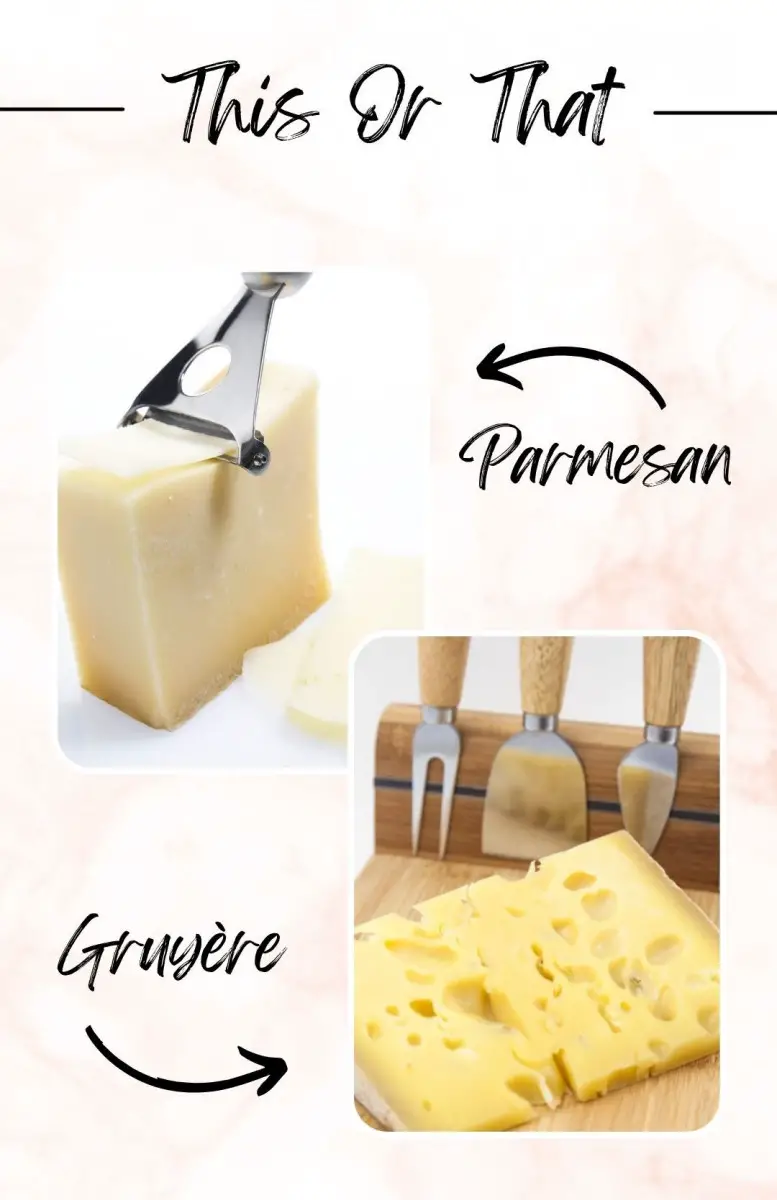Last Updated on March 22, 2024 by Aaron
If you’re looking for a cheesy alternative to Parmesan, Gruyère might be the cheese for you.
Parmesan and Gruyère are both types of cheese made from cow’s milk, but they have some significant differences.
In this blog post, we’ll discuss the key distinctions between these two cheeses so that you can decide which one is right for your next recipe.
Feature Comparison: Parmesan or Gruyère?
Are you looking for a cheese with a strong, nutty flavor? Or are you in the mood for something more mellow and creamy?
Gruyère is a Swiss-style alpine cheese similar to Emmental that originates from Switzerland, while Parmesan comes from Italy.
Parmesan has a stronger, nuttier flavor than Gruyère. It’s also typically harder, grainier, and drier than Gruyère. Gruyère is softer, smoother, and creamier than Parmesan, and it will develop a nutty, earthy flavor when aged.
Parmigiano Reggiano is a variety of Parmesan that’s particularly similar to the aged Gruyère. Read Parmesan Vs Parmigiano Reggiano. On the other hand, some domestic Parmesans which are typically less aged can be just somewhat similar to Gruyère.
Parmesan is made from partially skimmed cow’s milk. Gruyère, on the other hand, is made from whole milk.
Due to its strong flavor, Parmesan is best used in dishes where it can be the star ingredient. For example, Parmesan is delicious in a simple pasta dish with olive oil and black pepper.
Gruyère, on the other hand, is versatile enough to be used in both savory and sweet dishes. Gruyère is often used in gratins, quiches, and soufflés. It’s also commonly found in desserts like apple tarts and banana bread.
Also, If you’re looking for a cheese to use in a sauce or fondue, Gruyère is a good choice. Parmesan is also a good candidate for sauces, but its flavor may be too deep for some dishes. Not to mention, Parmesan does not melt that well but is often quite good for snacks like parmesan crisps.
Can I Substitute Gruyère for Parmesan?
If you’re looking for a tasty alternative to Parmesan, give Gruyère a try. It’s a delicious cheese that can be used in a variety of dishes. Just remember to adjust the amount of cheese called for in the recipe if you’re substituting Gruyère for Parmesan.
Gruyère has a more mellow flavor than Parmesan, so you may want to use a little bit more Gruyère than Parmesan to get the same level of flavor in your dish.
Parmesan is also saltier than Gruyère, so you may want to reduce the amount of salt called for in the recipe if you’re using Gruyère as a substitute.
Now that you know the key differences between Parmesan and Gruyère, you can decide which cheese is right for your next dish. Will it be the strong, nutty flavor of Parmesan or the mellow, creamy taste of Gruyère?
The choice is yours!

